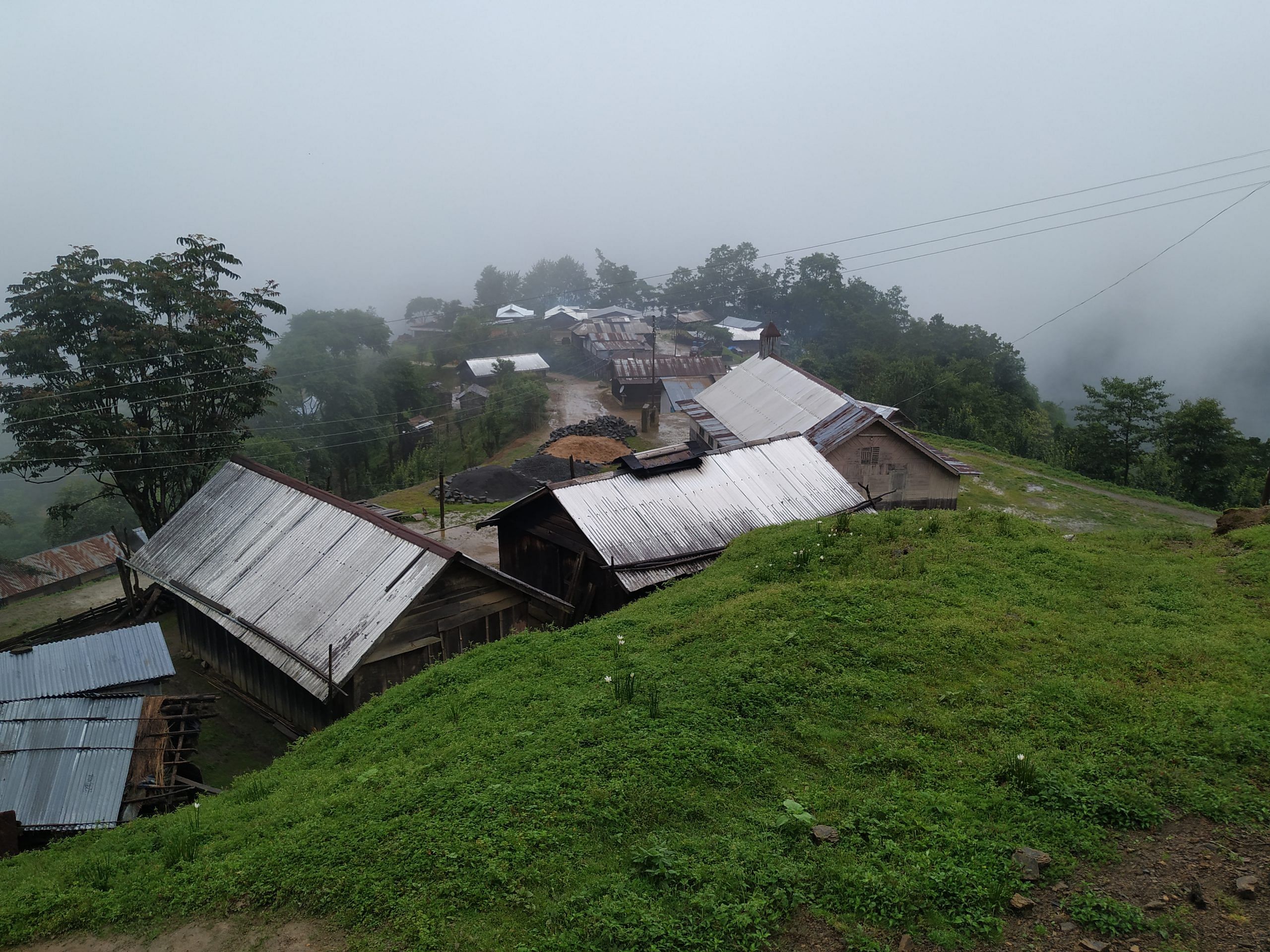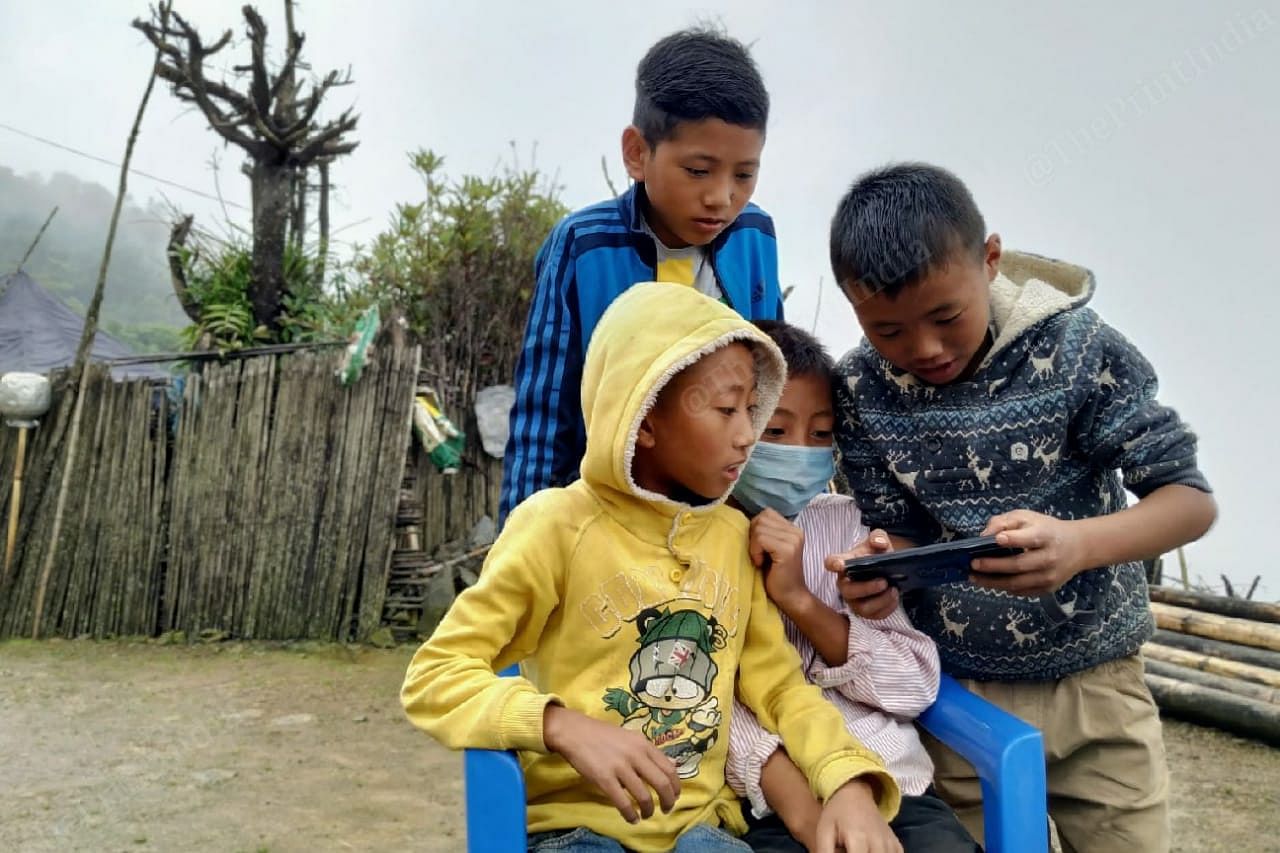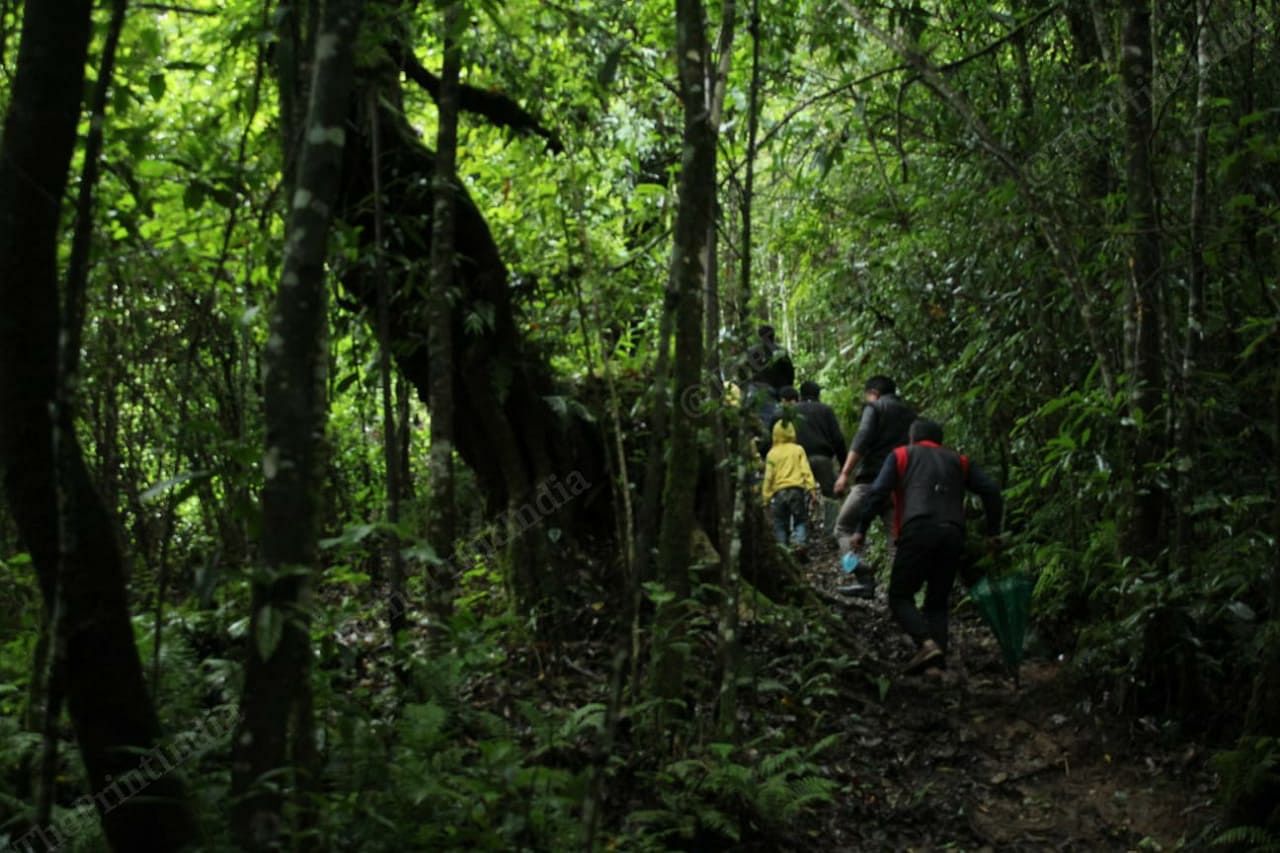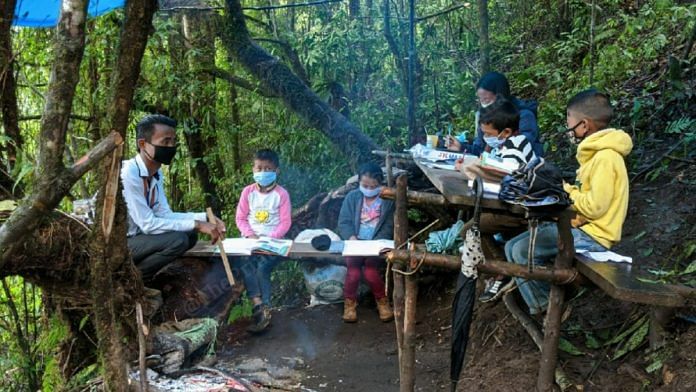Zunheboto: For two weeks, eight-year-old Hivika Zhimomi had been trudging up a hill to a spot through a dense jungle in his village in Nagaland’s Zunheboto district to appear for his first quarterly exams for the year, which concluded last week.
Hivika, a student of Class 3, takes the 3-km would trek through a recently carved out road in the thicket of trees in Tsuruhu village, which ends in a small clearing. There, he sat on a wooden bench, underneath a blue tarpaulin, across the “ exam moderators” who are members of the village students’ union, to write his papers.
A moderator dictated the questions to Hivika from a smartphone, one of the only three in the remote village, and he wrote the answers on a sheet of paper. The moderator would then click pictures of the answer sheets and send them to his school.
This particular spot, though a strange choice for an examination centre, is the only area in the entire village that receives network connectivity.
The nearest cell tower is in Gokhuvi village, which is over 15 km away on the other side of the hill.
“It is difficult but we have to do it,” said Hivika’s father, Bovika Zhimomi, a farmer.

“If there were a network tower in our village, I would buy a smartphone by any means. So that at least I can let my kid have online classes or exams at home, than letting them go in the jungle.”
Shikaho Zhimomi, whose 9-year-old son Gokhivi was also among those writing exams, said, “If we don’t send the kids to the jungle for exams then it’s our loss only. We are doing this for their future… For now, to have a network tower is a must in the village.”
As the Covid-19 pandemic rages on and schools remain closed, Bovika’s grievances are being echoed by students and parents across Nagaland, and several other Northeastern states.
According to the government’s 2018 data, internet connectivity has only reached about 35 per cent of the population in the eight Northeastern states, and around 8,600 villages still don’t have access to the internet.
“We have a lot of issues, especially in the interior districts. So that’s why we are trying both the online and offline methods… The network, even if it is there, will be erratic in many places. So we need a permanent solution,” Nagaland’s Principal Director, School Education, Shanavas C. told ThePrint.
Also read: Knitting, sketching, handicrafts — quarantine’s a vacation in this Nagaland village
Quest for signal
Tsuruhu village is among the ten villages in Satoi administrative circle, located at an elevation of about 2,000 metres in the Satoi range. The village is surrounded by one of the only remaining virgin forests in the region, and is nestled between white clouds and a dense growth of trees.
The 90 residents of the village, who belong to the Sema tribe and share the same ancestry, are dependent on agriculture as their source of livelihood.
According to K. Khuniho Zhimomi, the head ‘gaon bura’ or the government-appointed village head, most of the people in the village are literate.
“This year, due to the pandemic, all the children are coming back here. And the youth here have had to come forward in order to help the young kids with their studies and exams,” Khuniho said.

But 39 college and school students coming back home has proved to be a hurdle.
“Students here face many problems. They don’t have proper notes because they don’t have a network and they don’t have any connection with the teachers. The parents were shocked when they heard that exams will be taken online,” said Iuka Zhimomi, president of Tsuhuru Students Union.
But Tsuruhu Baptist Church pastor Shikavi Awomi came to their rescue. A few months ago, while looking for soil for his potted plants in the forest, he had chanced upon a spot with strong network connectivity.
“[At that time] I came back and told my village people that if anyone had work related to the internet they could go to that spot. Now, ever since the online classes started, I asked the church members to get the phone numbers of the subject teachers so that they can send the study materials through WhatsApp,” Shikavi said.
In the initial few days, members of the students’ union would have to climb atop trees and switch on their mobile data. Later, the area was cleared and benches installed for the students to be able to appear for their exams.
Also read: Deserted roads, shuttered shops — life under ‘strict lockdown’ in Nagaland’s Kohima
Northeast struggles with online education
The Telecom Register Authority of India in 2019 had pegged the number of internet subscribers in the Northeastern states, except Assam, at 6.09 million and the subscriber per 100 population at 2.75 — the lowest in the country.
Under the Comprehensive Telecom Development Plan for the Northeast Region, 6,673 mobile towers are being set up in 8,621 identified uncovered villages and 321 mobile towers for national highways.
In Meghalaya, authorities said online classes are difficult as the network is extremely patchy. They are, therefore, distributing study materials through teachers wherever it is possible.
Meghalaya’s West Khasi Hills District Commissioner Tableland Lyngwa said online classes are still not a possibility in many remote areas.
“The main service provider is BSNL (Bharat Sanchar Nigam Limited) here, but they can’t cover the remote areas. The towers are installed but the link is erratic. So, to have online classes, if there’s no continuity of internet connection then it’s not possible,” he said.
“Phone calls are not possible in the remote areas due to the difficult terrain. So we are doing it by traditional communication like by word of mouth.”
Dr Syed Kazi, director of Northeast Development Foundation that has been working in the domains of education, entrepreneurship and technology, said: “Private operators are not investing in remote places because their rate of return is not that much.”
But, as the number of Covid-19 cases continue to rise, officials in the region seem to have little choice but to adopt remote learning.

Schools working out solutions
Last month, Nagaland’s Department of School Education issued directives to all government schools keeping in mind the difficulties faced by students in remote areas in accessing education.
According to the directives, teachers should make notes for every topic, which will be disseminated through television, radio or online programmes. Schools should also contact parents on different days, in the beginning of the week, to distribute the notes.
“Just before the lockdown, we introduced the teacher’s diary… (and) modified it a little bit,” Shanavas said, adding, “We told the teachers in the remote areas to encourage distribution of notes and worksheets to the students, entries of which are made in the teacher’s diary. We will monitor the activity through this.”
Lessons are also being broadcast in Nagaland over Doordarshan and the All India Radio.
“I did not expect so much pro-activeness and initiative (by students and teachers),” said Nini Sekhose, president of the All Nagaland Private Schools Association.
“In fact, all of the districts have reported 85 to 90 per cent of attendance in the first-quarterly exams (through both online and offline),” she added.
In Arunachal Pradesh, Meghalaya, Assam, and Manipur also, school lessons are being broadcast through TV, radio and other online programmes.
Also read: How communities in Nagaland, other NE states are fighting Covid with own task forces, SOPs



